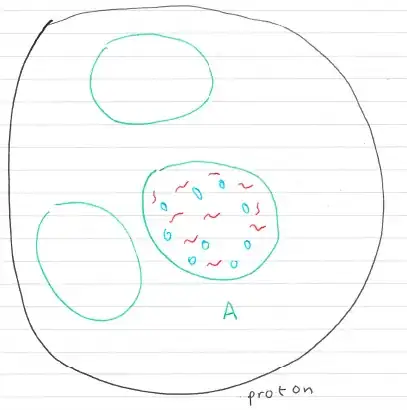In one of my previous questions I define the parton distribution function, following that of D.Stump as follows:
$f_i(x,Q^2)dx$ is the mean number of the $i$th type of patron with longitudinal momentum fraction from $x$ to $x+dx$ appropriate to a scattering experiment with momentum transfer $Q$.
I am slightly confused by the last term 'appropriate to a scattering experiment with momentum transfer $Q$'. How can the 'mean number of the $i$th type of patron with longitudinal momentum fraction from $x$ to $x+dx$' (which seems to be an property of the proton) change depending on how we probe it? And why can we take: $$\sum_i\int f_i(x,Q^2)dx=1~\forall~Q$$
